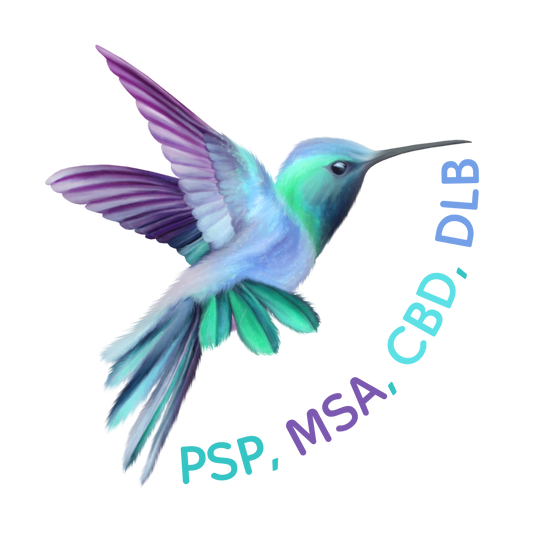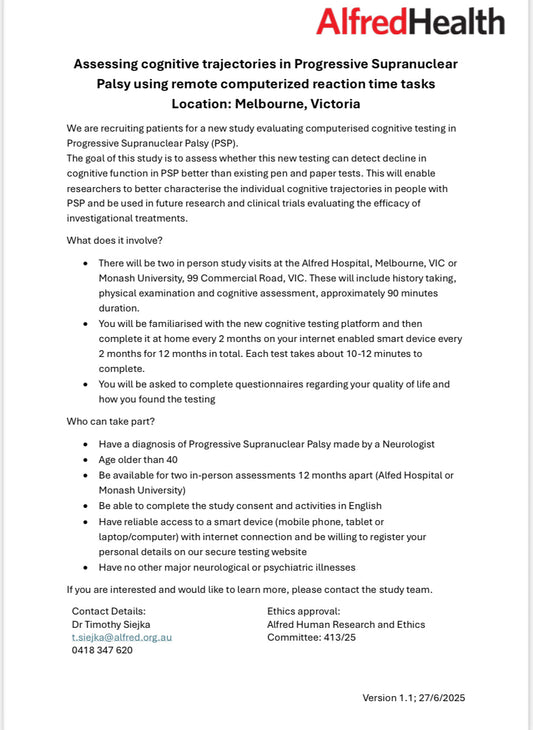Progressive Supranuclear Palsy (PSP) is a rare neurodegenerative disorder that shares some features with Parkinson's disease. One of the main challenges faced by individuals with PSP is managing the movement-related symptoms, particularly rigidity and dystonia. This blog post aims to provide an in-depth look at rigidity and dystonia in PSP, the impact on daily life, and strategies for management and coping.
Understanding Rigidity and Dystonia in Progressive Supranuclear Palsy
- Rigidity in PSP
Rigidity refers to increased muscle stiffness and resistance to movement. In PSP, rigidity is caused by the degeneration of certain brain cells, particularly those in the brainstem, basal ganglia, and cerebellum. Rigidity in PSP can affect any part of the body but is more commonly observed in the neck, trunk, and limbs. This can lead to a variety of complications, including:
- Reduced range of motion in joints
- Pain or discomfort due to muscle stiffness
- Postural abnormalities
- Difficulties with mobility and balance
- Dystonia in PSP
Dystonia is a movement disorder characterized by involuntary muscle contractions that cause twisting or repetitive movements, abnormal postures, or both. In PSP, dystonia typically affects the neck (cervical dystonia) and facial muscles (oromandibular dystonia). Dystonia can cause significant discomfort, pain, and difficulties with daily activities, such as speaking, eating, and maintaining a comfortable posture.
Managing Rigidity and Dystonia in Progressive Supranuclear Palsy
- Medications
While there are no specific medications approved for the treatment of rigidity and dystonia in PSP, certain medications used for Parkinson's disease may provide some relief. Levodopa, a medication that helps replenish dopamine in the brain, may temporarily alleviate rigidity in some individuals with PSP. For dystonia, anticholinergic medications or muscle relaxants, such as baclofen or benzodiazepines, may help reduce muscle contractions and alleviate discomfort.
- Botulinum Toxin Injections
Botulinum toxin injections, such as Botox, can be an effective treatment for focal dystonia, particularly cervical and oromandibular dystonia. By blocking the release of a neurotransmitter called acetylcholine, botulinum toxin injections can temporarily reduce muscle contractions and provide relief from pain and discomfort. Injections are typically administered every 3 to 4 months and can be tailored to the specific needs of the individual.
- Physical Therapy
Physical therapy plays a crucial role in managing rigidity and dystonia in PSP. A physical therapist can design a personalized exercise program to help maintain or improve range of motion, flexibility, and strength. Passive and active stretching exercises, along with therapeutic massage, can help alleviate muscle stiffness and discomfort associated with rigidity. In the case of dystonia, specific exercises targeting the affected muscles may help reduce the severity of symptoms.
- Occupational Therapy
Occupational therapy can help individuals with PSP adapt to the challenges posed by rigidity and dystonia in their daily lives. An occupational therapist may recommend adaptive equipment, such as utensils with built-up handles for easier grip, or strategies for conserving energy and performing tasks more efficiently. They may also suggest modifications to the home environment to improve safety and accessibility, such as installing grab bars or using a raised toilet seat.
- Speech and Swallowing Therapy
Dystonia affecting the facial and neck muscles can lead to difficulties with speech and swallowing. A speech-language pathologist can provide strategies to improve speech clarity and swallowing function, reducing the risk of choking or aspiration. Techniques may include exercises to strengthen the muscles involved in speech and swallowing, as well as modifying the consistency of food and liquids to make them easier to swallow.
- Deep Brain Stimulation
In some cases, deep brain stimulation (DBS) may be considered for the treatment of severe rigidity or dystonia that does not respond to medications or other therapies. DBS involves the surgical implantation of electrodes into specific regions of the brain, which deliver electrical impulses to modulate abnormal brain activity. While DBS has shown some promise in alleviating movement-related symptoms in Parkinson's disease, its effectiveness in PSP is still under investigation, and the procedure carries potential risks and complications.
Coping with Rigidity and Dystonia in Progressive Supranuclear Palsy
- Emotional Support
Living with rigidity and dystonia can be emotionally challenging for both individuals with PSP and their families. Support groups, counseling, and other mental health resources can provide valuable emotional support and coping strategies. Connecting with others who are facing similar challenges can help reduce feelings of isolation and provide a sense of community.
- Education and Advocacy
Understanding PSP, rigidity, and dystonia is essential for managing symptoms and advocating for appropriate care. Educating oneself about the disease, available treatments, and strategies for symptom management can empower individuals and their families to make informed decisions about their care.
- Self-Care
Taking care of one's physical and emotional well-being is crucial when living with PSP. Engaging in activities that bring joy and relaxation, maintaining a healthy diet, getting adequate sleep, and practicing stress management techniques can all contribute to overall well-being and improved quality of life.
Rigidity and dystonia are significant challenges faced by individuals with Progressive Supranuclear Palsy. Understanding these movement-related symptoms and their impact on daily life is essential for managing the condition and improving quality of life. With the help of a multidisciplinary team, including medical professionals, therapists, and support networks, individuals with PSP can find ways to manage rigidity and dystonia and maintain a sense of control and independence in their lives.


 Donate
Donate




2 comments
I am sole-caregiver to my 85 year old wife, who was a natural dynamo before contracting PSP (Richardson’s syndrome). I receive no help from relatives, limited support from our HMO, and do not have time to spend trying to find someone to assist. After 36 years of marriage, and with more than a passing familiarity with psychology, I have an intimate understanding of her reactions and intentions. For example, what her neurologist passed off in an office visit as pseudobulbar response was actually an amusement response, and she has several each day. If her caregiver did not understand her sense of humor, those responses would undoubtedly be taken as pseudobulbar. She is currently at 6 years after diagnosis, and her neck, trunk and limbs are extremely rigid. However, I’ve noticed under certain calming circumstances that she exhibits fleeting lapses of rigidity (I feel a muscle relax for a fraction of a second, then tighten again). I’m not sure that another caregiver would notice this, but we work in close, symbiotic physical contact with each other for transfers, toileting and feeding several times per day. I have two questions: 1. Is any research being conducted or considered on relaxation therapy to alleviate advanced PSP muscle rigidity, and 2. What results should we expect from botox injections? Would my wife be able to grasp things with her hands afterward? Regarding Q2, her current HMO neurologist does not seem to me to be very knowledgable about PSP (her previous neurologist made the diagnosis), so I’m skeptical about her answers to my clinical questions.
My neck is very rigid . And the left side hurts. Do you have any sugestions . Was told i had psp.